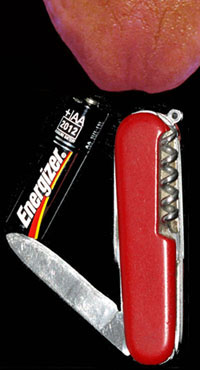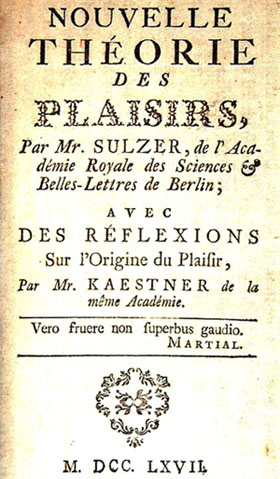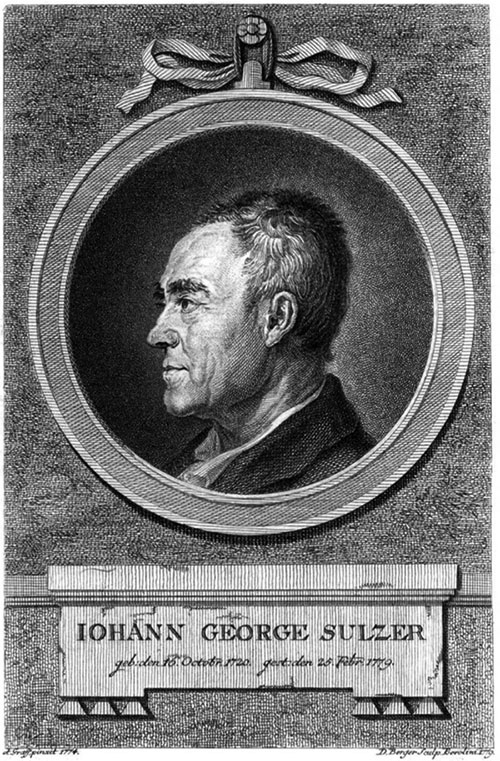Sulzer and Taste
Today, taste in the mind and taste on the tongue. The University of Houston's College of Engineering presents this series about the machines that make our civilization run, and the people whose ingenuity created them.
 Hardware stores didn't sell cheap convenient battery testers when I was young. Throughout most of my life, I tested batteries by opening my penknife halfway, placing the blade across the negative side, then touching the positive pole, and the other end of my knife, to my tongue. When the battery puts out its full 1-1/2 volts I get a strong, bitter, vibrating taste. When the battery's low, that sensation is greatly muted.
Hardware stores didn't sell cheap convenient battery testers when I was young. Throughout most of my life, I tested batteries by opening my penknife halfway, placing the blade across the negative side, then touching the positive pole, and the other end of my knife, to my tongue. When the battery puts out its full 1-1/2 volts I get a strong, bitter, vibrating taste. When the battery's low, that sensation is greatly muted.
Unlikely as it may seem, that test was discovered before the modern battery was invented. Alessandro Volta built his galvanic cell in 1800. The electric volt carries Volta's name, while his invention is named after Italian scientist Luigi Galvani.
Volta may not've been the first battery maker. An ancient artifact found in Baghdad could've been an electric battery used for some purpose. But modern battery use began with Volta. And it was foreshadowed when philosopher Johann Georg Sulzer discovered the taste test, a half century earlier.
Born Swiss in 1720, Sulzer studied mathematics in Germany. He taught math in Berlin while his interests veered toward philosophy. He became deeply involved with aesthetics. Consider the basic question of aesthetics: What constitutes beauty? That gets complicated as we count the huge range of things we call beautiful -- a person, a song, a smell, a painting, a forest, a sunset, a mathematical proof -- or a taste. Is beauty in the thing or in our head? Can we find any absolute standards for it? If you were raised listening either to Western classical music or to Indian Ragas, how did you react when you first heard the other tradition? Did you hear beauty or just noise?
Sulzer was quite taken with those horribly complex questions. He saw the perception of beauty as apart from intellect or moral feeling. He called it taste, a term that persists, even though Sulzer has largely been forgotten. He believed that we see beauty (or should I say, taste it) when we creatively reconstruct in our minds, what we've seen. Taste was a high form of genius.
Sulzer, whose life straddled Handel's and Mozart's, saw opera as the highest art because it was formed from so many elements. (To experience opera, our minds must do some fancy constructive work.) But later philosophers disliked all that talk about taste. They kept looking for absolute beauty that lay outside of our minds.
Now, back to our battery taste test (which is, perhaps, beautiful in its own right): In 1752, long before Volta, Sulzer tasted pieces of lead and silver together. He wrote, "a pungent sensation [that] reminds me of the taste of green vitriol when I placed my tongue between these metals." So Sulzer's legacy was not his aesthetics. With taste on his mind, he put us on the way to the electric battery; he set the stage for Galvani, Volta -- and, I suppose, for Duracell and Energizer as well.
I'm John Lienhard at the University of Houston, where we're interested in the way inventive minds work.
 Sultzer describes his electrical taste experiment in his book Nouvelle Théorie de Plaisirs; avec des Réflexions sur l'Origine du Plaisir. See the image on the right.
Sultzer describes his electrical taste experiment in his book Nouvelle Théorie de Plaisirs; avec des Réflexions sur l'Origine du Plaisir. See the image on the right.
Here is a brief online biography of Sulzer.
The Wikipedia article on Sulzer is shorter, but it mentions the taste test.
See also the Wikipedia article on Batteries.
The Sulzer image is from Wikipedia commons. The Battery taste test image is by JHL.
